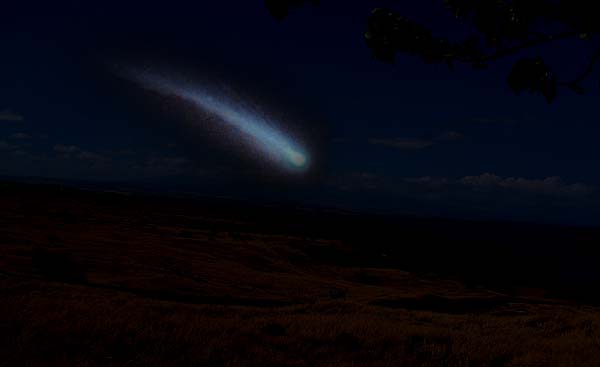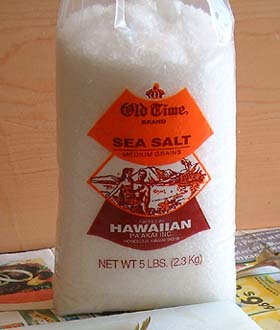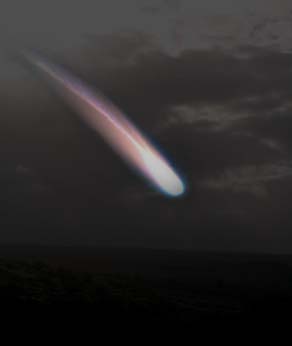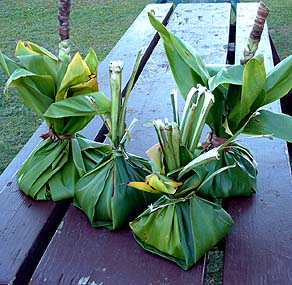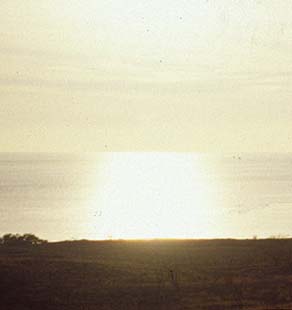 |
 |
 |
|||||
|
|
|||||||
|
|
|||||||
| |
|
|
|
|
| “Akualele is what they call a fireball,” ‘Ilima explains, “and it is sent by someone who wants you dead. And I’ve seen this, so this is not a legend, it’s real. Usually it was sent by a kahuna. Akualele, I guess it’s like a 'flying god,' and that’s exactly what it does: it flies. And if it fell in your yard or if it fell on your house, someone in that house is going to die. "It’s a fireball that has a tail. And when it hits the ground, the ball will explode, but the tail will keep on going. Like a lizard tail, you know. My husband was raised in Hana, Maui, and the same thing happened there, so it’s not just isolated to this area. This is Hawaiians that send it. If they want someone dead in your family, they would send an akualele. "This would happen usually at night. At night, you could see it fly in the air. I think basically people do evil things at night. Sometimes during the day—it would happen during the day too—but basically at night."
|
||
|
|
||
"And what would dispel it would be Hawaiian salt, or cursing. I remember my sister Lani telling us the story that someone sent an akualele to our house when we were living on the mango farm. But my Tutu man [grandfather] was alive at that time and my Mom and Dad had only one son. There were five of us girls and just one boy, but the akualele came towards our house and my Tutu man saw it, and he went out on the porch and he started just cursing, and the thing just exploded. "But my brother got deathly ill. And my grandfather knew who it was for. It was meant for him, because my grandfather, he was very outspoken. "I’ve seen that akualele several other times. When my Mom and Dad were pastors, I remember going to Kona, we were all in the car, and then this akualele fell right in front of our car. But because my Mom and Dad were Christians, then we just prayed. But I remember the tail going! Yes, it was really scary, really scary."
|
|
|
“We’ve seen them at Keawaiki,” Ku‘ulei says. “My dad would always explain it as animals, when they die, the gases in their stomach explode, and my father said the combustion sometimes will make a fiery thing. He said it might be an optical illusion, he said it could be that. But I remember seeing that from the beach and my dad goes, ‘It’s probably a dead animal, the gases from their stomach’ and I said, ‘Come on, dad.’ You know? "But he said ‘Well, they believe that there’s fire balls.’ And my father always had an explanation for everything. Some of the things he didn’t want you to be afraid or, so he’d explain it away. But we saw those over there at Keawaiki. My dad said it’s a really strong place. All those places along the coast. He said there are people all along there, so there was probably war there, and he said ‘You know, there’s places here that probably a lot of stuff went on.’ "I remember my dad talking about, they used to have bad magic too. People would make bad magic in those days and my father says that he remembers hearing them chant, and he said that just by listening to the chanting, you know that it’s not good. But I’ve never experienced that on my own."
|
“The akualele, if you're evil and you don’t like this family, they send this fireball to your place,” Pua states. “And that means that they are trying to put a curse on you, or something. I saw it once in my life. I saw this. It was headed for our porch. And you know my Dad, he spoke in Hawaiian and he spat! And that thing just burst. So he spat at it, and the thing just burst into like flame. All of a sudden go poof! And it’s gone. "And he always used to say, ‘That’s bad luck. Somebody jealous of our people.’ And then he talked to my Mom again in Hawaiian, what they want, what we have that they want from us, you know. But my Dad said he’s not giving them anything that they want because he said, ‘Whatever I have, I worked for it.’"
|
|
|
|
|
“If you look at ‘ana‘ana (sorcery)," Mel says, "and Hawaiians had various types—they were good at it! My Kawaihae grandfather was not into that type of belief. However, many of his family were. The use can be for good and for bad, like the balance of life: the up and the down. “Where my grandfather was situated in Kawaihae, in front of him there was a sand road and the beach was right there. And we were living between families who had a grudge for each other, and as such, we used to see the akualele going flying in front of the house! And then, he had a way of making them disappear. You know, you scream at them, yell at them, all the akualele fall down. But you know, it was just like, every night this thing was happening! You sit out, just catching the air, and all of a sudden these akualele were coming up. “My grandfather and I would sit in the house and they used to do their ritual on the beach, and he could not see farther than the road, so he’d ask me what they were doing there. ‘Oh, they’re digging a hole on the beach....Oh, I think they got the Bible and threw it in the hole and are standing on it.’ All these kinds of stuff they’re doing. And he’d scream at them!"
|
||
|
|
||
"There is the pu‘olo (bundle) that people keep at home. This is part of the ‘ana‘ana (sorcery). People would keep it home to benefit the family, or for negative purposes. The pu‘olo contained the remains of a person that one knew well that had hala (passed away). The keeper makes sure that the spirit (unihipili) in the pu‘olo is respected and prayed to until it becomes obedient. Sometimes two or three sticks were kept the same way. They were used to eliminate a person that is not wanted, or for guarding a sacred place or a house. "Keepers of the secrets got together in their own way of prayer. This rite was performed in front my grandfather’s house. The good part about this is that I saw them change their lives over, and give up all this. I saw that change from when I stayed there to when I went back there in my later years. But I’m glad that one day in their lives, they gave up that type of worship."
|
|
|
“Oh yea, you see those kind of things,” Papa admits. “The Hawaiian has powers, you know. Depends on the person. Those days…. But today, nobody has that power. Because you cannot pass that on to the children. So if no one can keep that thing, not secret, but use it when they’re supposed to use it, not because they got the power, they can do anything what they want to do. No, that power is given to them for some purpose. You might say that it’s the power of the Devil, or Satan. But no, the power was used because you have the rights to it. It’s not to hurt people, but to help people better themselves. “But some of the power was very bad. You don’t see it today because people change. They put those things aside. They don’t believe any more. You have to have strong belief in what you do. I know that they had great knowledge, like for healing and stuff like that, using herbs. Telling you how you do it, the timing. When you do something you have to have the right timing. But today, no."
|
|
|
|
"When I was growing up there were certain things that were passed on. But as you get older, you question, you say, ‘Why this? Why that?’ So then, I said “Gee, before, when you had a high chief still in command, you have certain responsibilities in place. And as you grow up, that responsibility is passed on. And then you as a younger generation growing up, you must kind of set in order your whole life, in order for you to be a leader within the community."
|
||
|
|
||
The Kawaihae community maintained an ancient practice of entombing their deceased ones in caves. Learn about these burials.
|
||
|
|
||
|
|
|
|
|
|

|
| Kawaihae Home | Map Library | Site Map | Hawaiian Islands Home | Pacific Worlds Home |
|
|
|
|
|
|
|||
| Copyright 2006 Pacific Worlds & Associates • Usage Policy • Webmaster |
|||
